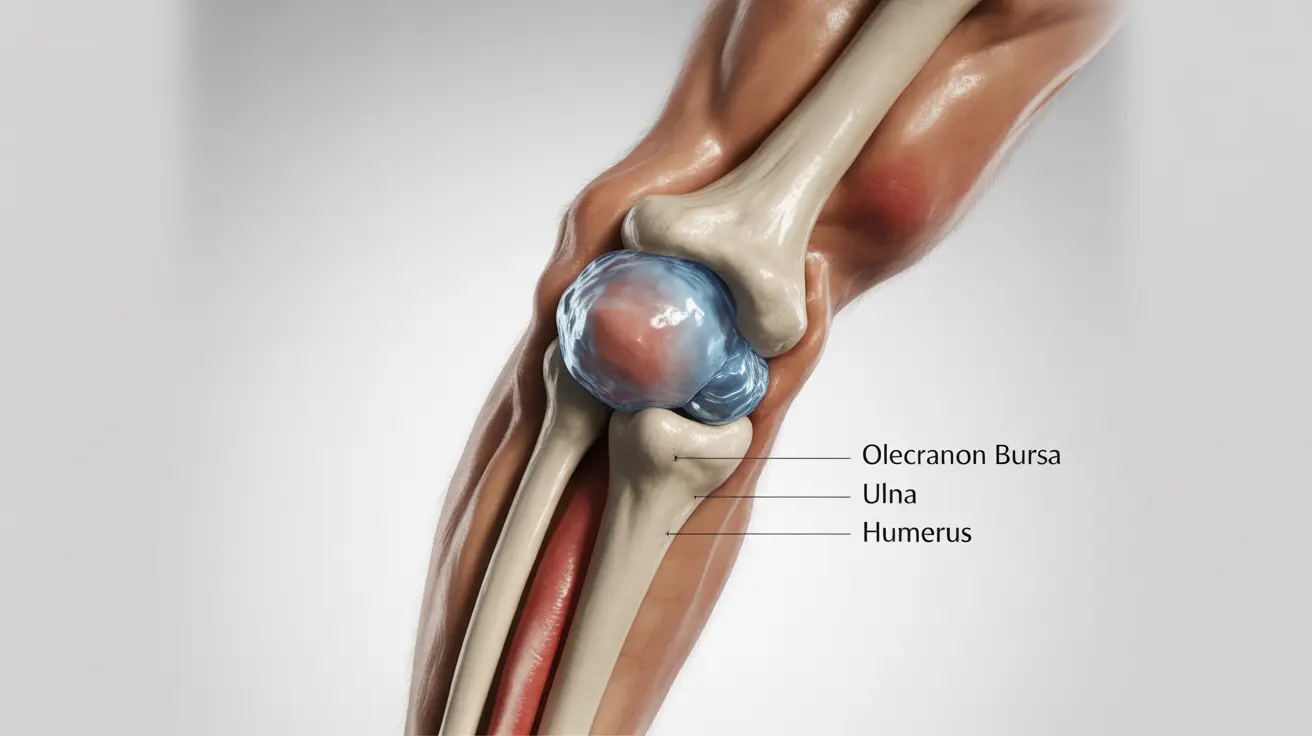Fluid buildup in your elbow, often caused by a condition called elbow bursitis, can be uncomfortable and concerning. This comprehensive guide will help you understand the causes of elbow fluid accumulation and explore effective treatment options, from home remedies to medical interventions.
Understanding Elbow Fluid Buildup
When fluid accumulates in your elbow, it's typically due to inflammation of the olecranon bursa, a small fluid-filled sac that cushions the pointy bone at the back of your elbow. This condition, known as olecranon bursitis, can result from injury, repetitive pressure, infection, or underlying medical conditions.
Common Causes of Elbow Fluid Accumulation
Several factors can lead to fluid buildup in your elbow:
- Direct trauma or injury to the elbow
- Repeated pressure from leaning on hard surfaces
- Inflammatory conditions like gout or rheumatoid arthritis
- Bacterial infection
- Sports-related overuse
Home Treatment Options
Many cases of elbow fluid buildup can be managed effectively at home, especially if caught early. Here are several proven strategies:
Rest and Activity Modification
Give your elbow adequate rest and avoid activities that put pressure on the affected area. This includes avoiding leaning on your elbow and modifying your sleeping position if necessary.
RICE Method
Implementation of the RICE protocol can help reduce swelling:
- Rest the affected elbow
- Ice the area for 15-20 minutes several times daily
- Compress with an elastic bandage
- Elevate the arm above heart level when possible
Over-the-Counter Medications
Non-steroidal anti-inflammatory drugs (NSAIDs) like ibuprofen can help reduce pain and inflammation. Always follow recommended dosage guidelines and consult with a healthcare provider if you have any concerns.
When to Seek Medical Treatment
While many cases improve with home care, certain situations require professional medical attention. Watch for:
- Severe pain or rapid swelling
- Redness and warmth around the elbow
- Fever or chills
- Limited range of motion
- Symptoms that persist despite home treatment
Medical Treatment Options
Your healthcare provider may recommend various treatments depending on the severity and cause of your condition:
- Aspiration (draining the fluid)
- Corticosteroid injections
- Antibiotics (if infection is present)
- Physical therapy
- Surgery (in severe or chronic cases)
Frequently Asked Questions
How can I get rid of fluid accumulation in my elbow caused by bursitis? Rest, ice therapy, compression, and over-the-counter anti-inflammatory medications are effective first-line treatments. If symptoms persist, medical intervention may be necessary.
What are the best home treatments to reduce swelling and pain from elbow bursitis? The RICE method (Rest, Ice, Compression, Elevation) combined with over-the-counter anti-inflammatory medications typically provides significant relief. Activity modification is also crucial for recovery.
When should I see a doctor for fluid in my elbow, and what medical treatments might be needed? Seek medical attention if you experience severe pain, redness, warmth, fever, or if symptoms don't improve with home treatment. Medical treatments may include fluid aspiration, steroid injections, or antibiotics.
Can elbow bursitis be caused by infection, and how is infected fluid in the elbow treated? Yes, bursitis can be caused by infection. Infected bursitis typically requires immediate medical attention and is usually treated with antibiotics. In some cases, the infected fluid may need to be drained.
How long does it take for elbow bursitis fluid to go away, and can surgery help if it doesn't? Recovery time varies from a few weeks to several months depending on the cause and severity. While most cases resolve with conservative treatment, surgery may be recommended for chronic or severe cases that don't respond to other treatments.
Taking prompt action and following appropriate treatment measures can help ensure a successful recovery from elbow fluid buildup. Remember to listen to your body and seek medical attention if symptoms worsen or fail to improve with home care.




